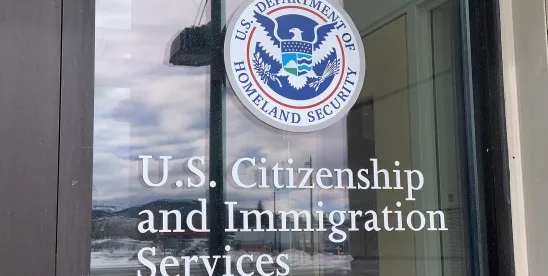In response to a Freedom of Information Act request the American Immigrant Investor Alliance (AIIA) filed, USCIS released updated statistics on I-526 and I-526E petition receipts. This data provides insights into the demand for EB-5 visas across different targeted employment area (TEA) categories and countries of chargeability for visa backlog prediction purposes, covering the period between April 1, 2022 (the EB-5 Reform and Integrity Act of 2022 passage date), and Jan. 31, 2025.
According to the data, USCIS received a total of 9,878 I-526/I-526E petitions, categorized as follows:
- Rural TEAs accounted for 44% of petitions, with China leading the category (2,684 petitions), followed by India (847 petitions) and the rest of the world (798 petitions).
- High unemployment TEAs comprised 53% of petitions, with 2,380 from China, 883 from India, and 1,928 from other countries.
- Infrastructure TEAs saw no petitions filed.
- Other TEAs represented 4% of petitions, with 98 from China, 60 from India, and 200 from the rest of the world.
In total, China dominated the petition count with 5,162 petitions (52%), India followed with 1,790 petitions (18%), and the rest of the world accounted for 2,926 petitions (30%).
Continuing Demand for EB-5 Visas in Set-Aside Categories
The data released to AIIA continues to show strong demand in the set-aside categories. Between April 1, 2022, and Jan. 31, 2025:
- A total of 5,191 investors filed petitions in the high unemployment area (HUA) set-aside category.
- 4,329 investors filed petitions in the rural TEA category.
Predicting the length of a potential visa backlog in these categories is difficult, but some experts agree that each EB-5 investor has two dependents also immigrating to the United States who also get counted against the annual visa numbers available in the EB-5 categories. With only 1,000 HUA set-aside visas and 2,000 rural set-aside visas available annually, the program may face significant backlogs in these set-aside categories. However, the State Department has not yet instituted a cut-off date for visa availability in the set-aside categories, potentially because USCIS has approved an insufficient number of I-526 and I-526E petitions in each fiscal year to warrant a backlog. Unless and until USCIS speeds up the processing of I-526/I-526E Petitions associated with the set-aside categories, the State Department may not establish a cut-off date.
Shifting Trends and Country-Specific Dynamics
Country-specific demand trends remain consistent, with China, India, and Vietnam ranking as the top three countries for EB-5 petition filings. Due to country-specific visa allocation limits, investors from India and China face the longest wait times under the EB-5 program. In contrast, investors from other countries typically experience shorter wait times, which might make the program more attractive for applicants outside of mainland China and India. The newly released USCIS data underscores the continued high demand for EB-5 visas, particularly in set-aside categories, despite potential visa availability constraints. This demand, coupled with country-specific limits, continues to create challenges for investors from high-demand countries like China and India. For those considering an investment under the EB-5 program, understanding these dynamics is crucial for planning and managing expectations.


 />i
/>i
